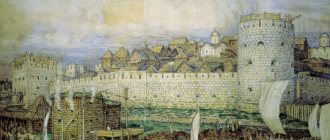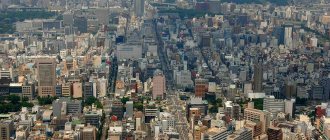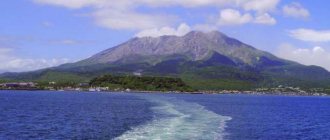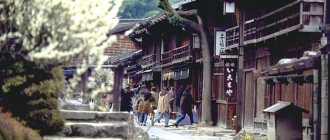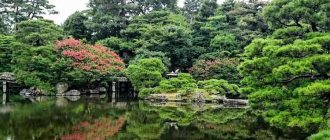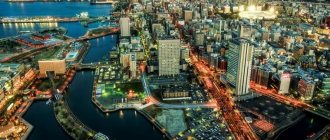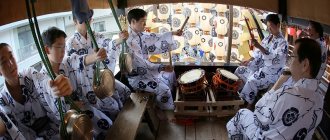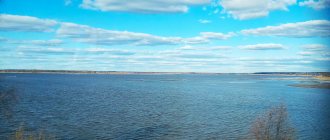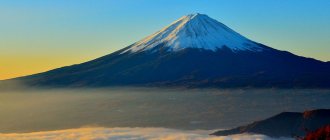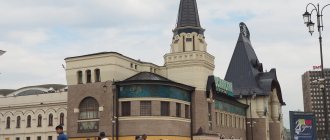Peculiarities
Acting as a progressive metropolis of one of the most developed countries in the world, Fukuoka has a developed infrastructure, modern technologies and convenient transport links. The textile, chemical and food industries, as well as mechanical engineering, are well developed here. Tourism plays a significant role in the life of the city. Many temples, monuments, museums, skyscrapers, parks, shopping and entertainment centers, shops and restaurants are visited by thousands of tourists every day. Fukuoka is perfectly adapted for living and recreation, fully corresponding to the status of a high-tech metropolis and the title of the largest city on the island of Kyushu. According to a survey by one of the world-famous British magazines, not so long ago it was recognized as the best shopping place on the planet, which certainly increased tourist interest in it even more.
general information
The territory of Fukuoka covers an area of more than 340 square meters. km, with a population of about 1 million 500 thousand people. Local time is 6 hours ahead of Moscow. Time zone UTC+9. There is no daylight saving time in Japan. Telephone code (+81) 92. Official website www.city.fukuoka.lg.jp.
Fukuoka, Japan
A brief excursion into history
Since the 7th century, on the eastern bank of the Nakagawa River there was a trading city of Hakata, which had established trade relations with China. In fact, the history of modern Fukuoka began with him. Being a kind of gateway to Korea and China, the city attracted the attention of conquerors, and in the 13th century, the Mongol ruler Khan Kublai turned his gaze towards Hakata Bay, washing the shores of the island of Kyushu. After long negotiations and the refusal of the Japanese to submit to the invaders, the Mongols attacked Fukuoka Prefecture and won, but Typhoon Kamikaze intervened, which means “Divine Wind,” which struck the foreigners. Thanks to him, the Japanese managed to defend their lands. At the beginning of the 17th century, on the western bank of Nakagawa, the influential feudal lord Nagamasa Kuroda erected a castle, around which a separate settlement eventually formed. As a result, in 1889, it was decided to unite the eastern and western banks. Thus, the city of Fukuoka arose, which became the capital of the prefecture and the largest port of the island of Kyushu. Today, there is a conventional division between east and west, where Hakata has the status of a commercial center, and Fukuoka performs business and administrative functions.
The history of Fukuoka
At the beginning of the 17th century, constant internecine wars were fought in Japan. Mighty samurai fought for every piece of land. One of the great commanders of that time was Nagamasa Kuroda. For one of his victories, Nagamasa was rewarded with a small plot of land. On this site stood Najima Castle, where the commander and his entire family settled. Soon Najima became too small for Nagamasa. He realized that the castle was not in an inconvenient place. All economic, political and trade routes were quite far from it.
Therefore, in 1601, the commander began building a new castle on the small hill of Fukusai. Its construction lasted seven whole years. Afterwards the castle was completed many times. An internal castle was built on its territory. This huge structure has turned into a whole complex. Brave samurai and great military leaders lived within its walls. There are also small temples and houses of ordinary people nestled here.
Gradually, a city appeared around the complex, which was named Fukuoka.
Now Fukuoka is a huge industrial center of Japan. The city has a unique historical and cultural heritage. It is a magnificent entertainment and shopping city.
Climate
The region's weather conditions are strongly influenced by the Pacific Ocean, although the region is dominated by a subtropical monsoon climate. The average air temperature between December and February is about +5 - +10 degrees. Summer is hot and humid, with a lot of rain, the bulk of which falls in March - September. There are typhoons throughout the year. The best time to visit the island is from October to February, but to avoid any unpleasant surprises, you should check the weather forecast in advance before your trip.
Hakozaki-gu Shrine
This shrine, together with two others (Iwashimizu Hachiman in Kyoto and Usajingu in Oita Prefecture), are among the main shrines dedicated to Hachiman (the deified Emperor Ojin). The sanctuary has a very long history. From the archives found, it became known that it was built in 921. And after 2 years it was moved from the Chikuzendaibu Palace.
It is important to note that the entire territory of the complex is a cultural heritage. In addition to the shrine, there are other valuable buildings here, such as the main pavilion, the worship pavilion, the tower gate and the Ito no Tori. Various festivals are held here throughout the year, attracting a large number of believers. Local festivals include Tamatori, where men fight for a ball made of wood to gain good luck throughout the year. In autumn there is another festival called Hojoya. There, caught animals and caught fish are released back into freedom.
The main pavilion and the worship pavilion, which have survived to this day, were built back in 1546. The buildings are varnished in the Kukensha-Nagarezukuri style and look quite majestic. The tower gates were built later - in 1594. They have a huge roof. Here you can also see 2 lanterns made of stone. They were used during tea parties by the master of tea ceremonies Sen no Rikyu, and this place is known as the “place of power” (Wakideishi).
In June, 3,500 hydrangeas bloom on the sanctuary grounds, so you can plan your trip here during this period to enjoy the beautiful flowers and their aroma. There is also a Shinen Flower Garden, which is a rock garden decorated with flowers and lilies. They bloom between December 10 and January 1.
Entry to the sanctuary is free.
Attractions and entertainment
One of the best places in Fukuoka for entertainment and fun is Canal City Hakata, which is a large-scale shopping and entertainment complex with numerous shops, bars, restaurants, theaters, gaming centers, cinema halls, hotels and a grandiose artificial canal, right in the middle of the complex. Among religious buildings, the Sofukuji Temple, founded at the end of the 12th century by the priest Eisai, deserves special attention. It is made of wood and is considered the country's first Zen temple. An excellent place for walking is the picturesque Ohori Park, which consists of a large reservoir and surrounding banks with green vegetation, along which there is a wide walking path. An excellent medieval monument is Fukuoka Castle, built in the 17th century by Nagamasa Kuroda. Only some of its fragments have survived to this day, but it still reflects its former greatness. In the modern part of the city, the Momochi Coastal Park attracts attention, where the Fukuoka Tower rises, from whose observation deck you can admire stunning views of the metropolis.
Near the capital of the prefecture is the small town of Dazaifu, which once had the status of the administrative center of Kyushu. Here, you should definitely visit the temples of Komyozenji, Kanzeonji and Dazaifu Tenmangu, which are the cultural and historical heritage of the island. In addition to exploring the iconic sights of Fukuoka, you should simply stroll along the city streets, appreciating the perfection of high technology, the thoughtfulness of the landscape design, as well as the convenient location and functionality of residential areas. All together, this answers the question of why the Japanese are considered the most progressive and advanced nation on the planet. Much attention is paid to festive events here, including the Hakata Dontaku festival, held every year in early May.
Sights of Fukuoka
The city center is Nakasu Island, Hakata, Tenjin stations. Geographically, the center of Fukuoka is a little further west, but it is in this area that all the most interesting things happen.
An important component of any trip for us now is getting to know the local cuisine. We have probably become a little Japanese in this regard. Kyushu is bursting with all kinds of regional dishes! Motsu nabe is a pork giblet soup that is a regional specialty of Fukuoka. Motsu nabe is quite fatty, but rich in collagen, which is why it is popular among Japanese women.
Another interesting Kyushu dish is raw horse meat . Eating raw meat was strange and unusual, but quite edible - similar to sashimi.
Metro in Fukuoka:
Evening in Fukuoka is the ideal time to see the famous yatai , open-air eating areas. Yatai is a Fukuoka landmark. All the guidebooks to Fukuoka talk about how authentic, romantic and indecently delicious it is. But in fact it turned out that yatai are not eating places, but drinking places, and quite wicked ones at that
